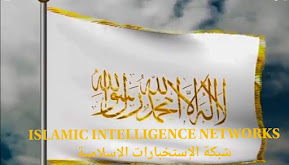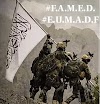Guns, Drugs and Sephardic 'jews' Al Saud of Saudi Arabia
Iran-Contra Operation
NBC Dateline - CIA drug trafficking - Contra connection
Before embarking on its plan for World War III, the Illuminati would first have to end the Cold War, by subduing the Soviet Union, to render America the remaining Western superpower to be pitted against the Muslim World. Therefore, in a Time magazine cover story, published on Jan. 15, 1979, Brzezinski proclaimed Iran, Afghanistan, and the Indian subcontinent as an “arc of crisis” that posed a grave challenge to the West, though one that could also spell doom for the Soviet empire. Essentially, in the Illuminati agenda, the Arc of Crisis was used as a pretext to ignite a band of Islamic fundamentalism across Central Asia, that could be first be used to bankrupt and destroy the Soviet Union, and then to recruit and engage a wave of Islamic fundamentalists to later be used as the specter of terrorism with which to frighten the Western world.
This strategy was revealed in the 1998 interview which Brzezinski gave to the Le Nouvel Observateur:
Yes. According to the official version of history, CIA aid to the Mujahadeen began during 1980, that is to say, after the Soviet army invaded Afghanistan, 24 Dec 1979. But the reality, secretly guarded until now, is completely otherwise Indeed, it was July 3, 1979 that President Carter signed the first directive for secret aid to the opponents of the pro-Soviet regime in Kabul. And that very day, I wrote a note to the president in which I explained to him that in my opinion this aid was going to induce a Soviet military intervention... We didn’t push the Russians to intervene, but we knowingly increased the probability that they would.[1]
Gulbuddin Hekmatyar
Chief among these Mujahideen dissidents was CIA asset Gulbuddin Hekmatyar, who for their sake postured a radical view of Islam and anti-Americanism. Hekmatyar received a diploma in engineering from Kabul University in 1968. At this time, he showed no sign of religious fundamentalism, though in 1970, he joined the or Muslim Youth, a faction of the Muslim Brotherhood. Nevertheless, he was also a member of the quasi-Marxist PDPA, until he was accused in 1972 of the murdering a Maoist student. He was found guilty and sent to jail for a period of two years. During the Daoud coup of 1973, Hekmatyar escaped to Pakistan, and was recruited by Pakistani intelligence. In Pakistan, Hekmatyar then founded the Hezbi Islami, or Party of Islam, even though he had never received a classical Islamic education.
The US’ move was understood as one that would likely lead to direct Soviet intervention, and that is exactly what happened. On December 24th of that same year, after being invited by the Afghani government, the Russian military took up positions to protect government assets from rebel attacks.
The CIA’s backing of the Mujahideen war in Afghanistan would become its largest covert operation in history, funded by an intricate series of clandestine and illegal activities, known as the Iran-Contra Affair, which involved the complicity of the Muslim Brotherhood and the Saudi regime as well. Essentially, the tremendous wealth created in Saudi Arabia through the orchestration of the Oil Crisis, would act as a slush fund to fund the CIA’s covert operations. When Reagan became president, his administration engaged in an expansion of the relationship already set out with Roosevelt, by which Saudi Arabia would build a massive network of naval and air defense facilities that could sustain U.S. forces, under the pretext that they would be needed to protect the region or wage war against an aggressor. The program also involved a new understanding that Saudi Arabia would become a partner in covert operations, but not just in the Middle East. The Saudis agreed to fund anti-communist guerrillas in Afghanistan, Angola, and elsewhere, who were supported by the Reagan administration, including the Contras of Nicaragua.[2]
Aside from Iran-Contra, when war broke out between Iran and Iraq in 1980, the U.S. secretly backed both sides of the conflict, and also became involved in an operation known as and Iraqgate. The Reagan administration used proceeds from arms sale to Iran to fund the right-wing Contras, in an effort to overturn Nicaragua’s left-wing, but democratically elected, Sandanista government. Both actions were contrary to acts of Congress, which prohibited the funding of the Contras, and the sale of weapons to Iran, which it regarded as a “terrorist state”. In addition, both activities also violated United Nations’ santions.
Throughout this period, until the death of Khomeini in 1989, Iran was the command center of international terrorism, inciting all Muslims, both Sunni and Shiah, to fight the Western countries, which he categorized as “greater and lesser Satans”. At the behest of the Americans, and using the local Shiah communities as intermediaries, Iran had supported and financed a number of “liberation” movements and armed factions, from Palestine to Northern Ireland, to Sudan, and the Ivory Coast.[3]
Prince Bandar
Initially, in order to side-step Congress, the U.S. approached Prince Bandar to solicit Saudi aid in funding the Contras. Prince Bandar bin Sultan, who was the grandson of Ibn Saud, and Hassa bint Ahmed al-Sudairi, one of the most honored and respected women in Saudi Arabia, was appointed Saudi ambassador to the U.S. in 1983, at the age of 34, an appointment he served for twenty years. Prince Bandar has had unprecedented access to Presidents and most senior American officials since the Reagan era. He was a close family friend of the Bushes, named affectionately by Barbara as “Bandar Bush”.
After the Hezbollah bombed American facilities in Beirut, and kidnapped CIA station chief William Buckley, it was CIA chief William Casey and Bandar who agreed to assassinate Sheikh Fadlallah, the terrorist group’s leader. Control of the operation was handed to the Saudis, who turned to the services of an operative from Britain’s elite special forces. The plan backfired, however, when the car bomb took down an apartment building near Beirut, killing eighty innocent civilians. Fadlallah escaped unharmed. Nevertheless, to cover their tracks, the Saudis provided Fadlallah with information identifying the operatives they had hired.[4]
Over time, Saudi aid to the Contras amounted to $32 million. Bandar was also used as an intermediary with Saddam, when he made known his readiness to accept American aid. The U.S. had also been aiding the Iranians, primarily to gain their influence with militant groups that held several American hostages in Lebanon, and who supported bombings in Western European countries. However, the U.S. was also concerned with supporting Saddam, to protect the Saudis and its oil reserves. Though Congress would not have approved, the Reagan administration secretly allowed Saudi Arabia, Kuwait, and Egypt to transfer U.S. weapons, including howitzers, helicopters, and bombs, to Saddam.
Also, part of the proceeds of the weapons sales to Iran had been channelled to finance the Mujahideen:
The Washington Post reported that profits from the Iran arms sales were deposited in one CIA-managed account into which the U.S. and Saudi Arabia had placed $250 million apiece. That money was disbursed not only to the contras in Central America but to the rebels fighting Soviet troops in Afghanistan.[5]
William Casey
The complexities of the Iran-Contra operation, and the arming of the fundamentalist Islamic Mujahideen in Afghanistan, were orchestrated by William Casey, then director of the CIA. Known as “off-the-shelf”, meaning unaccountable and invisible, Casey’s operations involved arms being traded with the Contras for cocaine, and profits from its sale to Black street gangs of Los Angeles, funds from which were then used for the various covert CIA campaigns.
The U.S. government’s involvement in drug-trafficking for the financing of covert activities dates back at least to the Office of Strategic Service (OSS), the predecessor of the CIA. A private agreement was settled between Allen Dulles, then Swiss “Station Chief” for the OSS, and later Director of the CIA, and SS General Karl Wolff, against the direct, written orders of President Roosevelt. The SS were granted freedom from prosecution in return for agreeing to secretly work for American intelligence against the Russians in the cold war. However, since it was impossible for the OSS to fund this secret network, Dulles allowed the Nazis to finance themselves from their vast stocks of Morphine, plundered Jewish gold, and a mass of counterfeit British bank-notes.[6]
During the Vietnam War, the CIA, with the assistance of the Hmong hill tribes of Vietnam, were smuggling huge amounts of Heroin from the Golden Triangle region of Southeast Asia. Prior to that, the French had controlled the Opium trade in this part of the world, a ring later became known as the “French Connection”. With the embarrassing defeat of the French at Dien Bien Phu, in 1954, the French began to withdraw their forces from Indochina, the Americans prevailed over the French, and appropriated the Opium trade, facilitated through the CIA’s Air America network of aircraft.
Richard Armitage
Years after the Vietnam War was over, the CIA remained an important player in the Golden Triangle heroin trade. This fact was corroborated Colonel Bo Gritz, a legend in the Special Forces community, after whom Sylvester Stallone modeled himself in the movie “First Blood”. During 1989, Gritz and two others traveled to the Shanland region of northern Burma, controlled by warlord Khun Sa, who runs the Golden Triangle Opium business. Gritz videotaped a meeting with Khun Sa, in which he revealed that the US government official he dealt with was Richard Armitage, the US Assistant Secretary of Defence. Khun Sa said that Armitage, in turn, used the services of a “traffic manager,” who he named on camera as Santos Trafficante, Florida’s notorious Mafia “Boss”.[7]
Armitage had been a professional assassin in Vietnam, Laos and Cambodia during the Vietnam war, and lead teams similar to the Phoenix program that killed and tortured tens of thousands of Asians. He has been accused of links to illicit gambling, drug smuggling and expansion of organized crime in Russia, Central Asia and the Far East.[8]
As Assistant Secretary of Defense in the Reagan Administration, Richard Armitage was in charge of coordinating covert military operations, and was in close liaison with Oliver North. Armitage’s deputy and chief anti-terrorist official, Noel Koch, was part of the team set up by Oliver North, in addition to Richard Secord, George Cave, a former CIA station chief in Tehran, and Colin Powell, military assistant to U.S. Defense Secretary Caspar Weinberger.
It was William Casey, with the collaboration of Richard Armitage in the Pentagon, who ran the Mujahideen covert war. Stinger missiles, mountain caves equipped as operation centers, military training camps for internationally recruited Islamic combatants, as well as training and recruitment inside the United States, were part of what was funded, using profits from the sale of opium and illicit drugs, funneled through the BCCI, at the behest of the Saudi Arabian government, working closely with the American CIA that used a proxy to cover its involvement, the ISI.





0 Comments